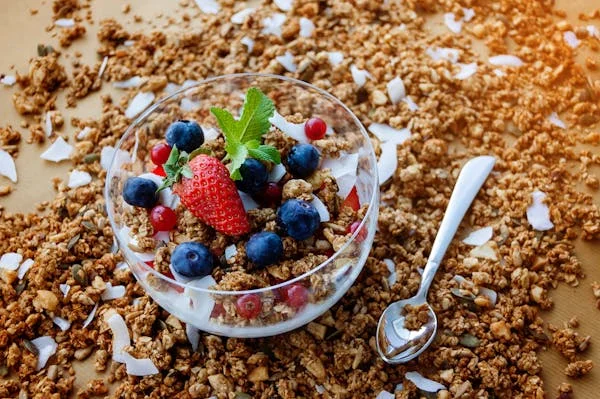Introduction
It was a crisp morning when the idea of adding ancient grains to your breakfast first caught the eye of cereal makers. In a world constantly seeking nutritious options, ancient grains began making a comeback, reshaping the landscape of health-conscious cereals. For centuries, these grains, long forgotten by many, have quietly been sustaining civilizations. Now, with a renewed focus on wellness and nutrition, they have found their place in healthy cereals, offering more than just fiber and protein. This article explores the vital role of ancient grain in a healthy cereal nyt, focusing on its modern resurgence and benefits.
What Are Ancient Grains?
Ancient grains are a group of grains that have remained largely unchanged for thousands of years. Unlike modern grains, which have been modified for mass production, ancient grains like quinoa, farro, amaranth, and spelt have preserved their original, nutrient-dense forms. These grains are packed with essential nutrients such as fiber, protein, vitamins, and minerals, making them a valuable addition to any diet, especially in a healthy cereal.
Why Ancient Grains Matter in Healthy Cereal
In today’s world, consumers are becoming more aware of the health benefits of the foods they consume. As a result, many are opting for cereals that contain ancient grains rather than the typical refined grains found in most store-bought options. Ancient grains in a healthy cereal offer a range of benefits that can enhance overall health.
- High Nutrient Value
Ancient grains are known for their superior nutrient content. For example, quinoa is rich in protein, offering all nine essential amino acids, while spelt and farro provide high levels of fiber, helping to regulate digestion and promote gut health. - Rich in Antioxidants
Many ancient grains contain antioxidants that help fight oxidative stress in the body. These grains provide a natural source of vitamins and minerals that promote overall well-being, from boosting immunity to improving skin health. - Gluten-Free Options
For those with gluten sensitivities, several ancient grains are naturally gluten-free. Quinoa and amaranth are two popular choices, offering a gluten-free alternative without sacrificing nutrition.
The Benefits of Including Ancient Grain in Your Cereal
When ancient grains are incorporated into cereals, they elevate the nutritional profile of the product. Instead of relying on empty calories from refined grains, cereals made with ancient grains provide sustained energy, keeping you fuller for longer. This makes them an excellent choice for anyone looking to start their day on a nutritious note.
Digestive Health and Fiber Content
Fiber is one of the most crucial aspects of a healthy diet, and ancient grains are packed with it. The high fiber content in ancient grain cereals can support digestive health, promote regular bowel movements, and help in weight management. Fiber also stabilizes blood sugar levels, making it an ideal choice for those looking to manage their blood sugar.
Sustained Energy Throughout the Day
The complex carbohydrates in ancient grains are digested slowly, providing a steady release of energy throughout the day. This makes ancient grain cereals an excellent option for a balanced breakfast, especially for those who need to fuel up for an active day.
Ancient Grain in a Healthy Cereal nyt: A Rising Trend
As the demand for healthier, more nutritious cereals increases, manufacturers have begun experimenting with ancient grains in their formulations. Ancient grain cereals are quickly becoming a trend among health-conscious consumers who are looking for alternatives to the traditional sugary options on the market.
One of the driving factors behind this trend is the growing desire for whole, unprocessed foods. Ancient grains, by their nature, are less processed and retain more of their nutritional value compared to their modern counterparts. This aligns with the consumer shift toward clean eating and natural ingredients.
How to Incorporate Ancient Grain Cereal Into Your Diet
Including ancient grain cereal in your diet is simple and versatile. You can enjoy it as a hot cereal, similar to oatmeal, or use it as a base for granola. Many manufacturers now offer pre-packaged ancient grain cereals, making it easier than ever to integrate them into your morning routine.
-
Mix with Fresh Fruits
Add fresh fruits like berries, apples, or bananas to your ancient grain cereal for a delicious, nutritious boost. The fruit adds natural sweetness and an extra dose of fiber and vitamins.
-
Pair with Plant-Based Milk
For a dairy-free option, try pairing your ancient grain cereal with almond milk, oat milk, or coconut milk. These plant-based options complement the nutty flavors of ancient grains.
-
Use as a Snack
Ancient grain cereals also make an excellent snack throughout the day. You can enjoy them on their own or mix them with nuts and seeds for a protein-packed snack.
Conclusion
The inclusion of ancient grain in a healthy cereal nyt is more than just a passing trend—it’s a movement toward healthier, more sustainable eating habits. These grains offer unmatched nutritional benefits, from their high fiber and protein content to their antioxidant properties. With their ability to improve digestion, stabilize blood sugar, and provide sustained energy, ancient grains are here to stay as a cornerstone of a nutritious breakfast.
As the popularity of ancient grains in a healthy cereal grows, more people are turning to these ancient foods to fuel their bodies with wholesome, unprocessed ingredients. Whether you’re seeking better digestive health, sustained energy, or a nutrient-dense start to your day, incorporating ancient grains into your cereal is a simple and delicious solution.
By embracing the power of ancient grains, you’re not only supporting your health but also connecting with a tradition that has nourished humanity for thousands of years.





